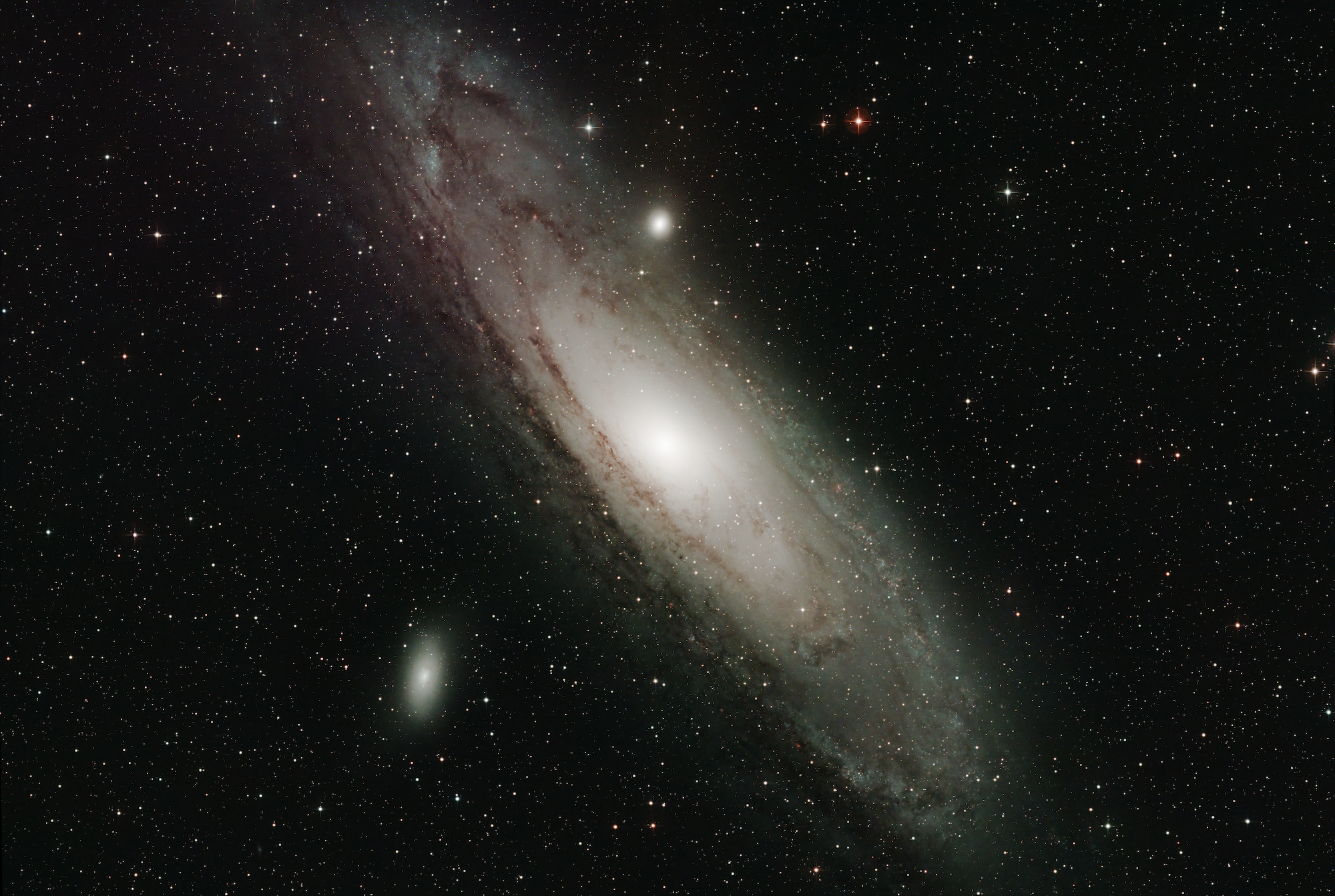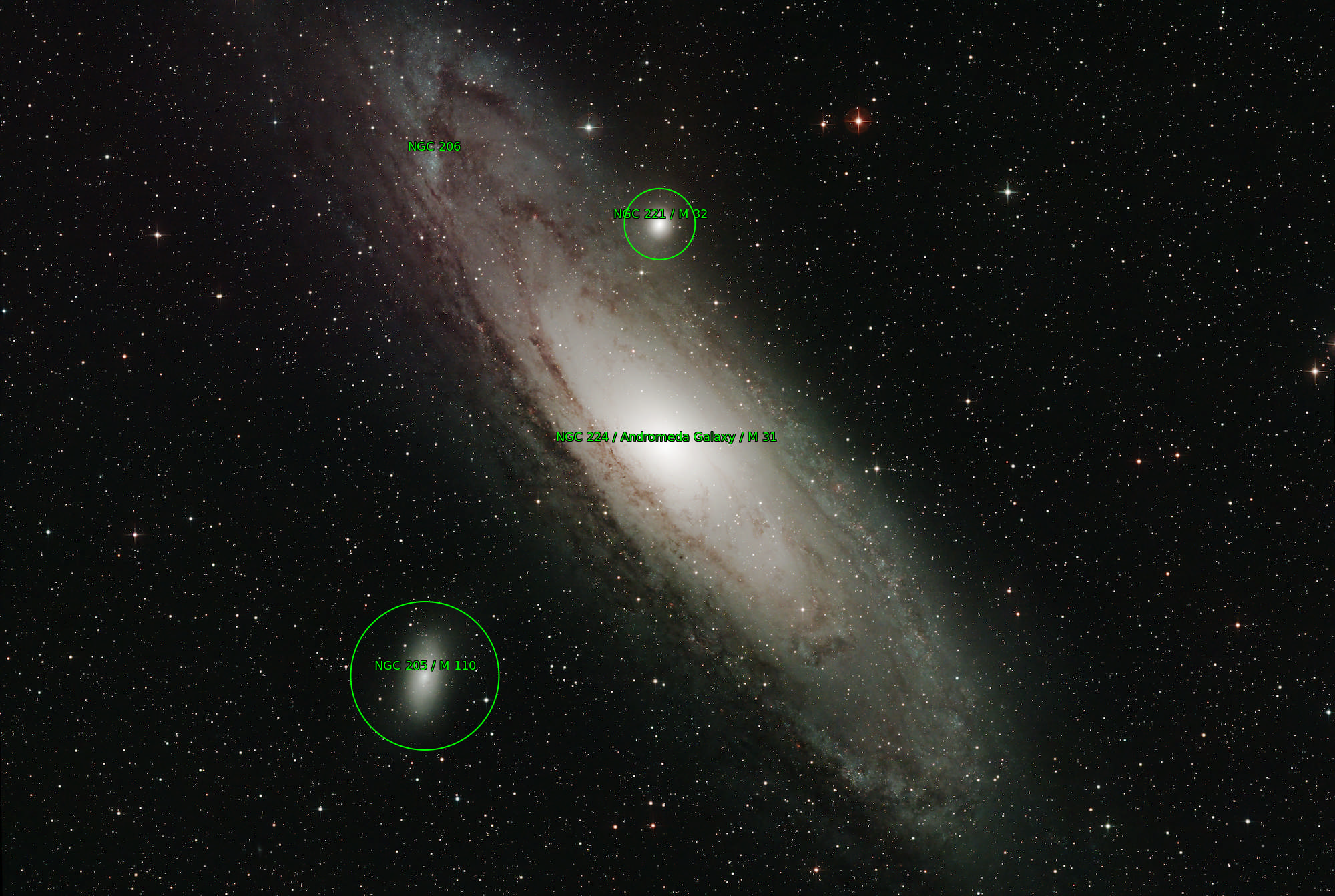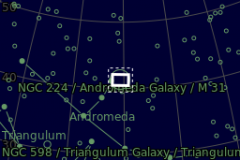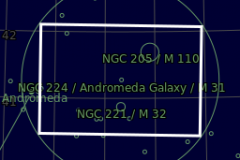

The Andromeda Galaxy (/ænˈdrɒmɪdə/), also known as Messier 31, M31, or NGC 224, is a spiral galaxy approximately 780 kiloparsecs (2.5 million light-years) from Earth. It is the nearest major galaxy to the Milky Way and was often referred to as the Great Andromeda Nebula in older texts. It received its name from the area of the sky in which it appears, the constellation of Andromeda, which was named after the mythological princess Andromeda.
Andromeda is approximately 220,000 light years across, and it is the largest galaxy of the Local Group, which also contains the Milky Way, the Triangulum Galaxy, and other smaller galaxies. Despite earlier findings that suggested that the Milky Way contains more dark matter and could be the largest in the grouping, the 2006 observations by the Spitzer Space Telescope revealed that Andromeda contains one trillion (1012) stars: at least twice the number of stars in the Milky Way, which is estimated to be 200–400 billion. The mass of the Andromeda Galaxy is estimated to be 1.5×1012 solar masses, while the Milky Way is estimated to be 8.5×1011 solar masses.
The Milky Way and Andromeda galaxies are expected to collide in 4.5 billion years, eventually merging to form a giant elliptical galaxy[14] or perhaps a large disc galaxy. The apparent magnitude of the Andromeda Galaxy, at 3.4, is among the brightest of the Messier objects, making it visible to the naked eye on moonless nights, even when viewed from areas with moderate light pollution. (Source: Wikipedia)
Technical Details
Dates: 21/9/2020
Location: Uckerath, Germany
Imaging Telescope: 8″ GSO f/4 (Carbon Tube)
Imaging Camera: ASI294 MC
Filter: Baader Planetarium UHC-S
Mount: Skywatcher EQ-6
Guiding Telescope: TSO OAG
Guiding Camera: QHY 5L-II
Mosaic: 4 panels (20% overlap)
Integration (Single Panel): 15 x 2 min (Gain: 120)
Software: NINA, PhD2, PixInsight
Plate Solution


(Source: astrometry.net)



Leave a Reply